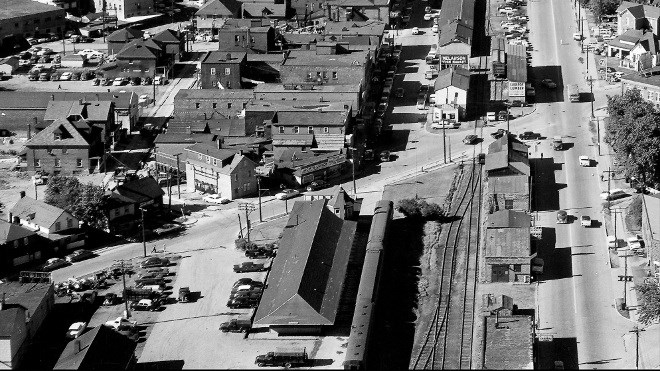Researchers with Laurentian University hope the city's past can help inform how we support Sudbury's low-income and homeless population today.
The university’s Poverty, Homelessness and Migration Project is interviewing former residents of the Borgia Street area, a working-class neighbourhood in downtown Sudbury demolished in the 1960s and 1970s to make way for the Rainbow Centre.
“It was considered the toughest neighbourhood in Canada at one time,” said Chanelle Larocque, the indigenous communications co-ordinator with the Poverty, Homelessness and Migration Project.
For a time, Borgia Street also had the highest amount of police calls in Canada.
The neighbourhood was home to a sizable population of Francophones and immigrants from Italy, Ukraine and Finland.
Larocque said there were six hotels – which were primarily bars at the time – on Borgia Street, and at least a dozen restaurants in the area.
Despite its rough edges – bar fights were common, along with petty crime and prostitution – the neighbourhood had a strong sense of community.
“Everyone watched out for each other,” Larocque said.
When the city demolished Borgia Street's 300 homes, and forced neighbourhood businesses to relocate, it left thousands of people homeless.
It took a decade for the city to build apartment buildings to house many of the people who lost their homes.
Larocque said she can see parallels to what happened to Borgia Street's residents, and the situation for homeless and low-income people in Sudbury today. “The rent is too high in Sudbury,” she said.
Laurentian University estimates there are more than 1,000 people in Sudbury who are homeless or at risk of becoming homeless.
Larocque said finding out what happened to Borgia Street's displaced residents – and where things went wrong – will help inform how the city can better support people who are in similar situations today.
She said she hopes the project's findings can contribute to new programs to help the city's homeless, and provide affordable housing options for people on fixed – and limited – incomes.
To date, the Poverty, Homelessness and Migration Project team has interviewed two former Borgia Street residents, and hopes to conduct as many as 30 interviews.
Larocque said she has already gathered some interesting anecdotes from the residents she has interviewed.
One man recalled how when he was a child, he and his friends would sit on the snowbank outside the Sudbury Electronic Equipment Store on Borgia Street to watch the city's first television through the front display window.
A woman Larocque interviewed told her about a local restaurant, called Slim's Lunch, that gave away free meal tickets to regular customers.
The owner made sure to give workers – mostly miners and lumberjacks – extra large plates after their shifts.
Laurentian's Poverty, Homelessness and Migration Project is still searching for former Borgia Street residents to share their experiences.
For more information, call 705-675-1151, ext. 5156 or email [email protected].
Join Sudbury.com+
- Messages
- Post a Listing
- Your Listings
- Your Profile
- Your Subscriptions
- Your Likes
- Your Business
- Support Local News
- Payment History
Sudbury.com+ members
Already a +member?
Not a +member?
Sign up for a Sudbury.com+ account for instant access to upcoming contests, local offers, auctions and so much more.
